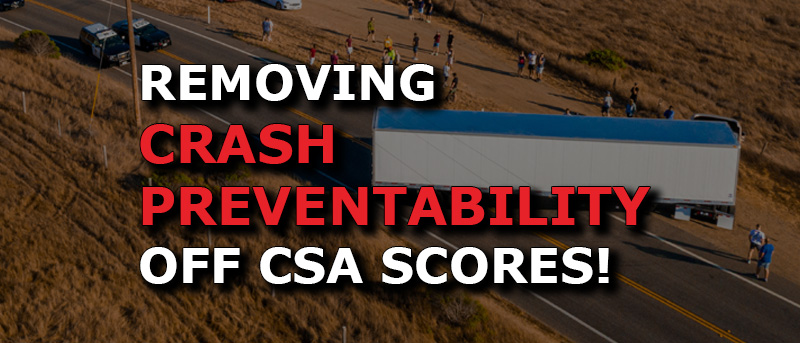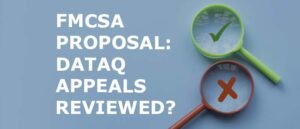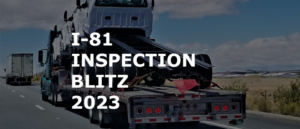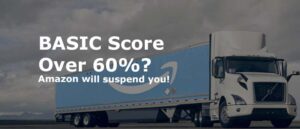How Fleets Can Easily Remove Crash Preventability Off CSA Scores
CNS can help with our Roadside & Incident Report Management service where a team of DOT Compliance Specialists will assess the Department of Transportation safety records
We are a team of DOT Compliance and Licensing Professionals helping trucking and transportation companies remain safe, compliant, and profitable.
CNS or Compliance Navigation Specialists is DOT Compliance company that assists trucking and transportation companies remain DOT Compliant. We are part of a network of companies, CNS Companies, specializing in services related to the transportation, manufacturing, construction, service, education and medical industries.

A full-scale DOT Compliance Program managing a long haul carrier’s safety, compliance, licensing and more.
Learn more >>>
A DOT Compliance Program that keeps motor carriers compliant with the 6 Basic DOT Regulations required of all carriers.
Learn more >>>
Our Short-Haul/Construction Program is a full-scale program designed for private carriers that do not haul for-hire.
Learn more >>>
Our most comprehensive DOT Compliance Program, operating as your company’s off-site Safety Director or assisting your current safety personnel.
Learn more >>>
Our Non-CDL Program is a full-scale program managing safety, compliance, licensing and more for moving companies, couriers, landscapers, or any company subject to DOT regulations and does not employ CDL drivers.
Learn more >>>
Our DOT Audit Services cover a number of different types of DOT Audits that new and existing carriers will be subject to.
Our DOT Driver Services help trucking companies and carriers to stay compliant as they grow and hire more drivers.
Our DOT Vehicle Services focus on ensuring your vehicles are compliant with DOT Regulations, which is just as important as your drivers.
Our DOT Services for Special Carriers focus on companies outside of the typical motor carrier, like HAZMAT, Passenger and Bus Carriers.
CNS is part of a group of companies that offer other necessary services for the trucking and transportation industry, such as Commercial Trucking Insurance, CDL Training, Online Training Course, and even Healthcare.
Our DOT Licensing Services will cover you whether you are an existing company or just starting a trucking company. Our DOT Licensing Specialists can help you get up and running and in days with your DOT number, MC Authority, EIN, UCR, IFTA, 2290 HVUT, Fuel Taxes and can even set you up to get your Commercial Driver's License (CDL) with CNS Driver Training Center.
Our DOT Licensing Specialists will help you with every aspect of starting a trucking company. All you need to do is choose a name for your trucking company.
You will need to ensure your DOT Number, MC Authority, Vehicle Registration, etc. is all set up properly when you start your trucking business.
Our Licensing Specialists can help with all aspects of filing and renewing licenses, fuel taxes, etc.
CNS is part of a group of companies that offer other necessary services for the trucking and transportation industry, such as Commercial Trucking Insurance, CDL Training, Online Training Course, and even Healthcare.
CNS can help with our Roadside & Incident Report Management service where a team of DOT Compliance Specialists will assess the Department of Transportation safety records
CNS or Compliance Navigation Specialists is DOT Compliance company that assists trucking and transportation companies remain DOT Compliant. We are part of a network of companies, CNS Companies, specializing in services related to the transportation, manufacturing, construction, service, education and medical industries.
CNS Companies is a network of companies specializing in services related to the transportation, manufacturing, construction, service, education and medical industries. Our DOT Compliance division is handled by Compliance Navigation Specialists, CNS Insurance handles Commercial Truck Insurance, CDL training is managed by the CNS Driver Training Center and healthcare is managed by CNS Occupational Medicine.
We are a team of DOT Compliance and Licensing Professionals helping trucking and transportation companies remain safe, compliant, and profitable.
CNS or Compliance Navigation Specialists is DOT Compliance company that assists trucking and transportation companies remain DOT Compliant. We are part of a network of companies, CNS Companies, specializing in services related to the transportation, manufacturing, construction, service, education and medical industries.

A full-scale DOT Compliance Program managing a long haul carrier’s safety, compliance, licensing and more.
Learn more >>>
A DOT Compliance Program that keeps motor carriers compliant with the 6 Basic DOT Regulations required of all carriers.
Learn more >>>
Our Short-Haul/Construction Program is a full-scale program designed for private carriers that do not haul for-hire.
Learn more >>>
Our most comprehensive DOT Compliance Program, operating as your company’s off-site Safety Director or assisting your current safety personnel.
Learn more >>>
Our Non-CDL Program is a full-scale program managing safety, compliance, licensing and more for moving companies, couriers, landscapers, or any company subject to DOT regulations and does not employ CDL drivers.
Learn more >>>
Our DOT Audit Services cover a number of different types of DOT Audits that new and existing carriers will be subject to.
Our DOT Driver Services help trucking companies and carriers to stay compliant as they grow and hire more drivers.
Our DOT Vehicle Services focus on ensuring your vehicles are compliant with DOT Regulations, which is just as important as your drivers.
Our DOT Services for Special Carriers focus on companies outside of the typical motor carrier, like HAZMAT, Passenger and Bus Carriers.
CNS is part of a group of companies that offer other necessary services for the trucking and transportation industry, such as Commercial Trucking Insurance, CDL Training, Online Training Course, and even Healthcare.
Our DOT Licensing Services will cover you whether you are an existing company or just starting a trucking company. Our DOT Licensing Specialists can help you get up and running and in days with your DOT number, MC Authority, EIN, UCR, IFTA, 2290 HVUT, Fuel Taxes and can even set you up to get your Commercial Driver's License (CDL) with CNS Driver Training Center.
Our DOT Licensing Specialists will help you with every aspect of starting a trucking company. All you need to do is choose a name for your trucking company.
You will need to ensure your DOT Number, MC Authority, Vehicle Registration, etc. is all set up properly when you start your trucking business.
Our Licensing Specialists can help with all aspects of filing and renewing licenses, fuel taxes, etc.
CNS is part of a group of companies that offer other necessary services for the trucking and transportation industry, such as Commercial Trucking Insurance, CDL Training, Online Training Course, and even Healthcare.
CNS can help with our Roadside & Incident Report Management service where a team of DOT Compliance Specialists will assess the Department of Transportation safety records
CNS or Compliance Navigation Specialists is DOT Compliance company that assists trucking and transportation companies remain DOT Compliant. We are part of a network of companies, CNS Companies, specializing in services related to the transportation, manufacturing, construction, service, education and medical industries.
CNS Companies is a network of companies specializing in services related to the transportation, manufacturing, construction, service, education and medical industries. Our DOT Compliance division is handled by Compliance Navigation Specialists, CNS Insurance handles Commercial Truck Insurance, CDL training is managed by the CNS Driver Training Center and healthcare is managed by CNS Occupational Medicine.

CNS can help with our Roadside & Incident Report Management service where a team of DOT Compliance Specialists will assess the Department of Transportation safety records by gathering police reports for all recorded accidents and evaluating their preventability.
Is there a crash you believe was non-preventable affecting your CSA score? Can you prove it?
FMCSA has allowed motor carriers to submit crashes for review into the DataQ system since August 2017 to determine whether the crashes were preventable or non-preventable.
The program had its faults as only those that fit in the eligible crash boxes would be considered for removal. Carriers could have clear evidence that a crash they had was not preventable, but if it didn’t meet the 16 eligible crash types, then it could not be removed.
Now, it has been a year since FMCSA expanded the program, adding 4 new types of crashes and other changes, which has led to more opportunities for fleets to prove a crash was preventable.
But have you tried walking through this process and found it complicated and time consuming?
There is a better way.
Outside of normal trucking expenses are the unplanned costs, which include: accidents, maintenance issues, costs of litigation, and roadside violations.
The average settlement amount for a truck accident is $73,109.92, which includes cases involving tractor trailers or other heavy/commercial trucks. The average settlement for a rear-end truck accident is estimated to be between $150,000 and $200,000, with 12% of verdicts in these cases over $1 million.
Beyond the cost of litigation and claims are the secondary costs and issues, which include:
When it comes to CSA scores, the Crash indicator BASIC faces challenges because all reportable crashes over the last 24 months are listed in FMCSA’s Safety Measurement System (SMS).
Specifically, crashes are automatically added as Preventable by default and requiring the motor carrier to submit into the Crash Preventability Determination Program (CPDP) for Non-Preventable determinations.
This is an issue because a high Crash Indicator percentile suggests that a further examination of crash cause(s) may be needed, and if correctable, the motor carrier should make changes to address the problem(s). Carriers cannot be above a 1.5 crash/million miles in the last 12 months.
To prevent future audits, carriers should be fighting Preventable determinations as moving them to Non-Preventable takes them away from your Crash Rate.
So, how do carrier do this?
Fault and preventability are two terms motor carriers often confuse.
So, even if a truck driver is not cited for being at fault for an accident, the motor carrier could still deem the collision preventable.
It is critical for fleets to document all vehicle collisions by maintaining an accident register and accident files and then conduct root cause analyses of all vehicle collisions to determine preventability. Then you can submit a DataQ submission.
However, even with clear evidence, fixing errors in the system can be difficult and time consuming when a filing gets rejected.
That whole time, which can take months, the violation is in the CSA score system and damaging your CSA score, insurance rates, and ability to do business.
This is where Roadside and Incident Report Management (RSIM) comes in.
If you notice incorrect information in your PSP report or the CSA Safety Measurement System (SMS), the DataQ process is there to help companies and drivers fight and remove these records that could be keeping your scores or insurance rates high.
And there are a lot of these DataQ submissions!
In 2019, FMCSA data shows that nearly half of the 54,000 DataQs were filed for inspections/crashes assigned to the wrong carrier or driver (for example, duplicate records in the system).
However, for crash-related information, only 43% of driver challenges were overturned while carrier service providers, like CNS, have nearly a 60% success rate.
The other issue is that obtaining Police Reports is a tedious process.
Let CNS help you out with our Roadside & Incident Report Management service where a team of DOT Compliance Specialists will assess the Department of Transportation safety records by gathering police reports for all recorded accidents and evaluating their preventability.
The three steps of our RSIM service include: Accident Data Retrieval, Accident Review & Crash Preventability Determination, and DataQ Submission for Crash Preventability.
Step 1: Accident Data Retrieval
First, we will need to gather all of the data associated with any accidents that your drivers have been involved in, organize those documents and safely store them in our cloud-based portal.
This includes:
Step 2: Accident Review & Crash Preventability Determination
Next, we will review all of the data and determine what is eligible for a DataQ Submission.
This includes:
Step 3: DataQ Submission for Crash Preventability
Last, we will organize and prepare everything necessary for your DataQ Submission which requires written explanations, proof of crash determinations, etc.
This includes:
Whether you would like our DOT Specialists to challenge one DataQ or conduct a monthly analysis of all roadside violations to potentially challenge, we have a cost-effective solution for your company.
Need help? Fill out the form below.

Violation challenges are the number one reason owner-operators utilize the DataQ system, but they are the least-successful category of challenge where only 39% were successfully

The I-81 focused enforcement inspection blitz will be in June, July, & August from TN all the way through NY up to the border. Did

Love is NOT in the air for SMS safety scores to change to an Item Response Theory model. In 2017, it was suggested that the

If you drive Amazon Relay and your safety score is over 60%, what should you do to be reinstated? Amazon offers local and relay delivery
Our DOT Compliance Programs ensure it is your top priority and keeps your business running.
Receive the latest transportation and trucking industry information about FMCSA and DOT Audits, Regulations, etc.

Violation challenges are the number one reason owner-operators utilize the DataQ system, but they are the least-successful category of challenge where only 39% were successfully

The I-81 focused enforcement inspection blitz will be in June, July, & August from TN all the way through NY up to the border. Did

Love is NOT in the air for SMS safety scores to change to an Item Response Theory model. In 2017, it was suggested that the
Join our monthly newsletter and stay up-to-date on trucking industry news and receive important compliance and licensing tips.
Join our monthly newsletter and stay up-to-date on trucking industry news and receive important compliance and licensing tips.